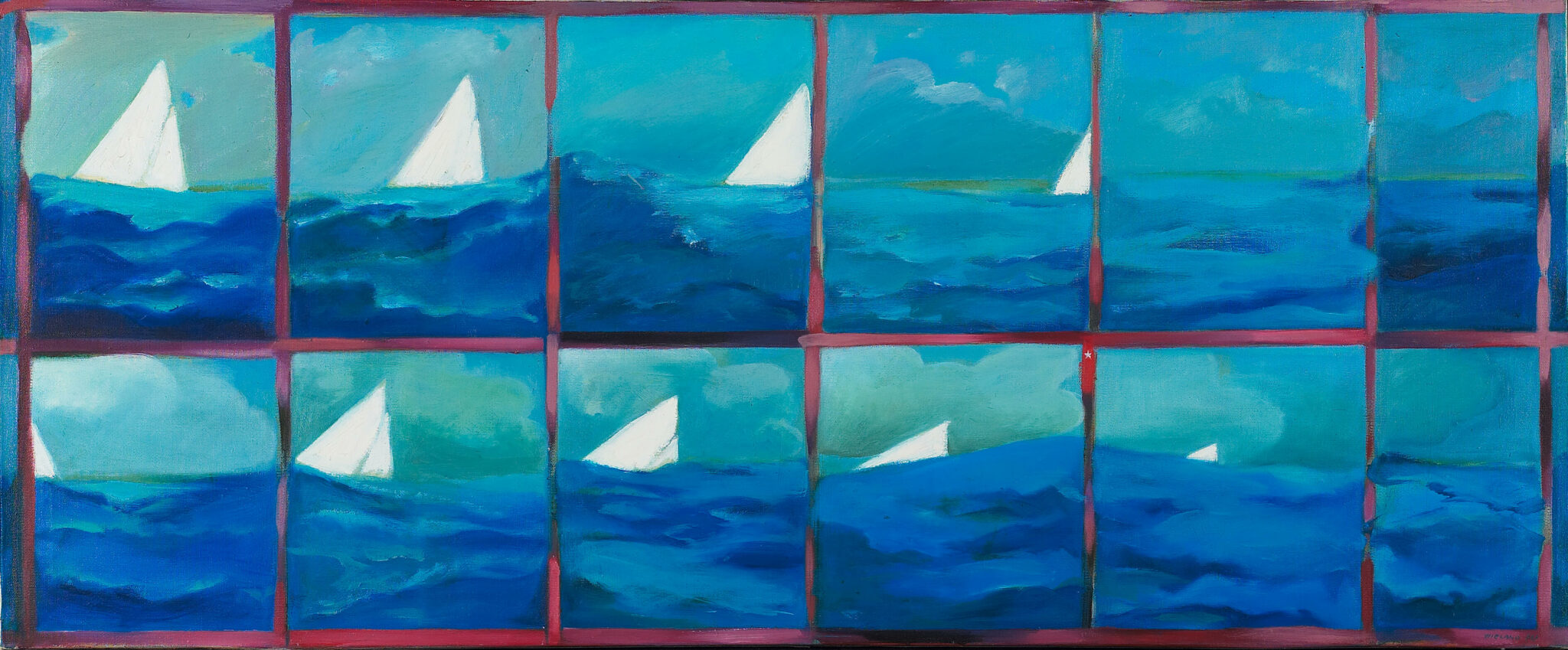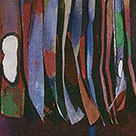Boat Tragedy 1964

Joyce Wieland, Boat Tragedy, 1964
Oil on canvas, 50 x 122 cm
Art Gallery of Ontario, Toronto
This multi-framed painting of a sinking sailboat is part of an interconnected body of work known as the Disaster paintings, which date from 1963 to 1966. Variations on this sequential work picture sinking boats and ocean liners, along with a few plane crash paintings, such as the striking Double Crash, 1966. In each of the boat paintings the narrative sequence is simple: a sea vessel appears, horizontally positioned against the line of the horizon, and frame by frame it tilts and founders, until it is swallowed up by the waves in the last panel.

Wieland reduces the visual information required to construct these scenarios. In some frames the boat consists of little more than a white triangle to suggest a sail, and the sea is indicated by an expanse of striated blue paint. Despite this shorthand the geometric shapes are intelligible as objects and spaces, and it is easy to empathize with the boats that have starring roles in these quasi-cinematic sequences. In some cases Wieland explicitly refers to films in the titles: Boat (Homage to D.W. Griffith), 1963, for instance, names the silent-film director. In others an abrupt transition from close-up to long shot clearly represents cinematographic strategies for visually constructing a story.
The Disaster paintings can be compared to the car crash paintings of Andy Warhol (1928–1987), made around the same time. Both artists are concerned with a commoditized world that serves up disaster on a daily basis as part of a media and entertainment spectacle. Wieland’s paintings are more fanciful than Warhol’s photo-based work, though. She also devises a clever way of manipulating the viewer’s emotional response. The little bobbing boat in Boat Tragedy may be absurd, but it is difficult to remain aloof from the drama, and from the sense of a tragic ending.

 About the Author
About the Author
 More Online Art Books
More Online Art Books
 Acknowledgements
Acknowledgements